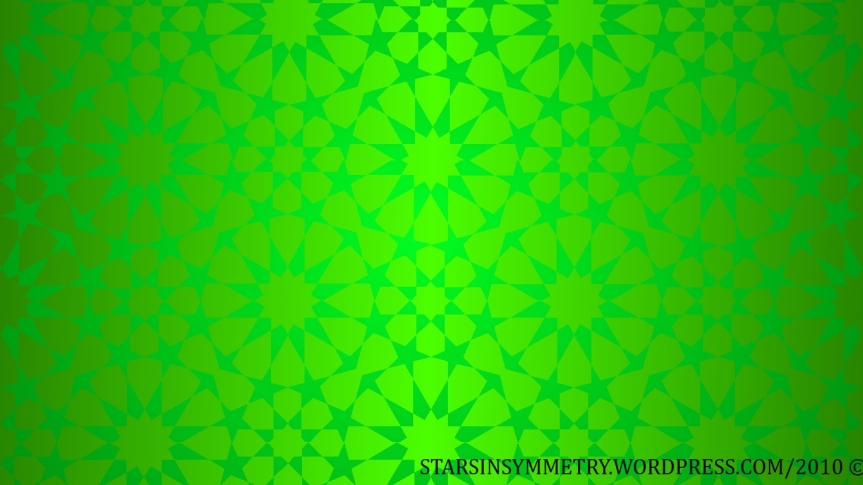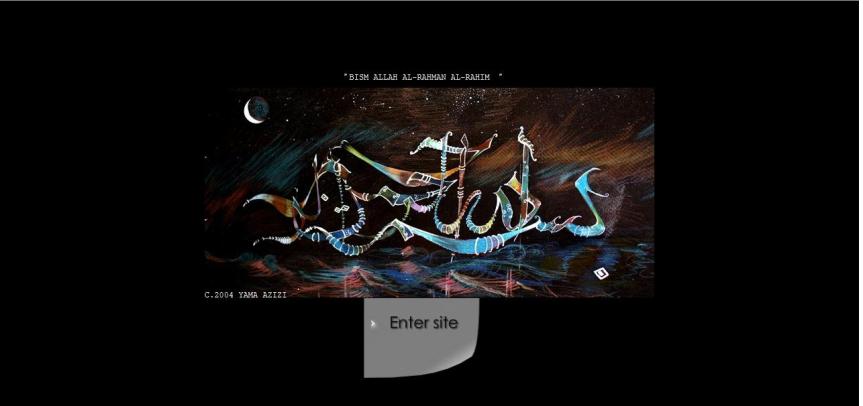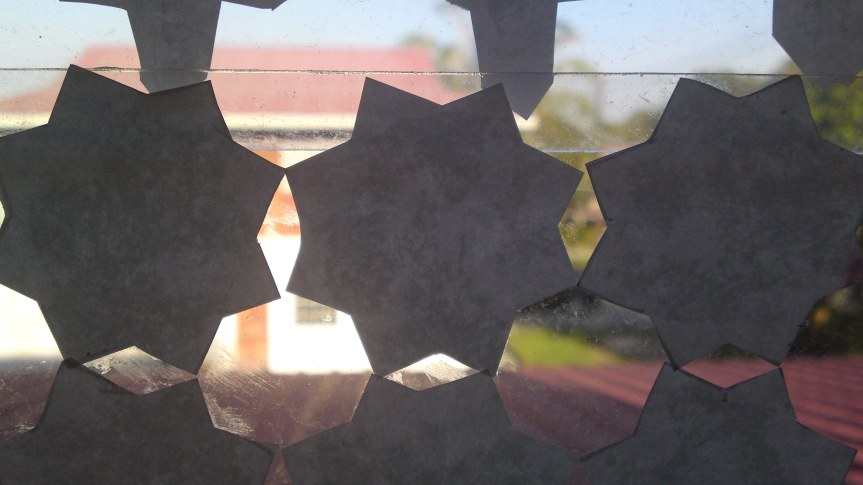This is the second batch of Islamic Stars wallpaper I have made. I recently use this free program (paint.NET) to do my works for my submission of Mushaf Cover project I have done last month (you can take a look into the post here) and I guess you can say I have a fairly good grasp of the program…not quite Adobe Photoshop, but this is pretty much good enough to teach me a little about photo editing.
Anyway, these wallpapers I have done are a little bit more complicated and if I may say, more well-done from the previous wallpapers I have posted. The resolution have changed though – from 1024×768 to 1366 x 768, because my present computer is in that resolution. However, if there is any demand, I would gladly make these wallpapers in another resolution . Please do tell me in the comments.
I decided to again follow the RGB colour scheme for the wallpapers, I guess because it is easier for me to choose, and also for you.
And, as always, these wallpapers are my properties and I have added a watermark in the lower-right corner of each image. Please do not erase the watermark and make it your own. Thank you!
This is the blue wallpaper, using a twelve-pointed star as the larger star motif and six-pointed star as the accent around the bigger star. I used the outlines of the stars and coloured it in cyan-turquoise colour, against a dark blue and navy background.
 The red star wallpaper for this series. I like this one better than the rest perhaps because of the simplicity and how the colours play well together and harmoniously. I used a stylized interlaced six-pointed star and coloured the lines in red-maroon. The background features orange-amber colours.
The red star wallpaper for this series. I like this one better than the rest perhaps because of the simplicity and how the colours play well together and harmoniously. I used a stylized interlaced six-pointed star and coloured the lines in red-maroon. The background features orange-amber colours.
This is the green wallpaper I have done. Liked this one because it almost looked like a damask silk fabric. I used another twelve-pointed star motif coupled with eight-pointed stars surrounding the motif. There is no outlines, just each shaped is coloured in either dark green- light green or Islamic green-sapphire combination.








 Omar Ali Saifuddin Mosque, Bandar Seri Begawan, Brunei Darussalam
Omar Ali Saifuddin Mosque, Bandar Seri Begawan, Brunei Darussalam















 The Dome of the Rock, with its golden dome in the vicinity.
The Dome of the Rock, with its golden dome in the vicinity. The Hagia Sophia, once a church, a mosque and now a museum.
The Hagia Sophia, once a church, a mosque and now a museum.  The Church of the Holy Sepulchre, the front facade.
The Church of the Holy Sepulchre, the front facade.